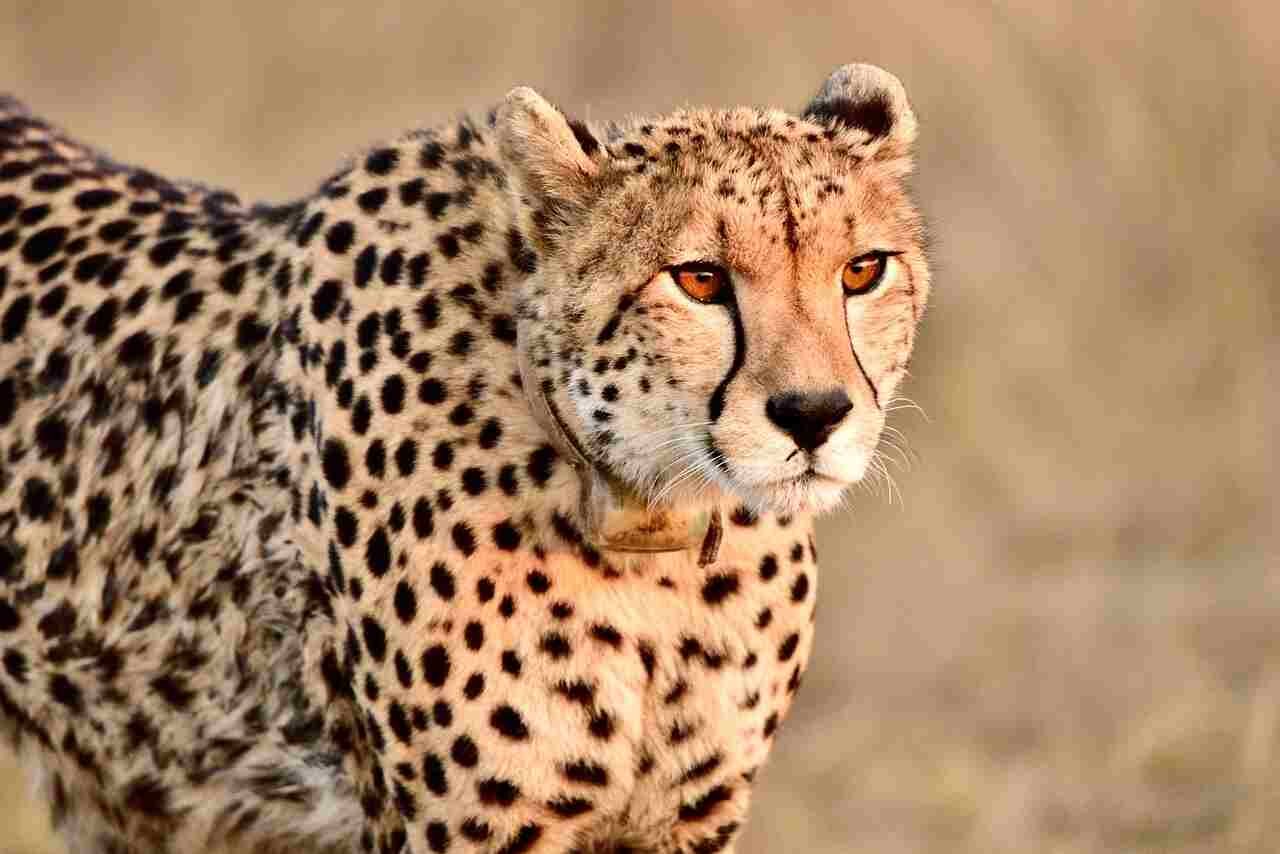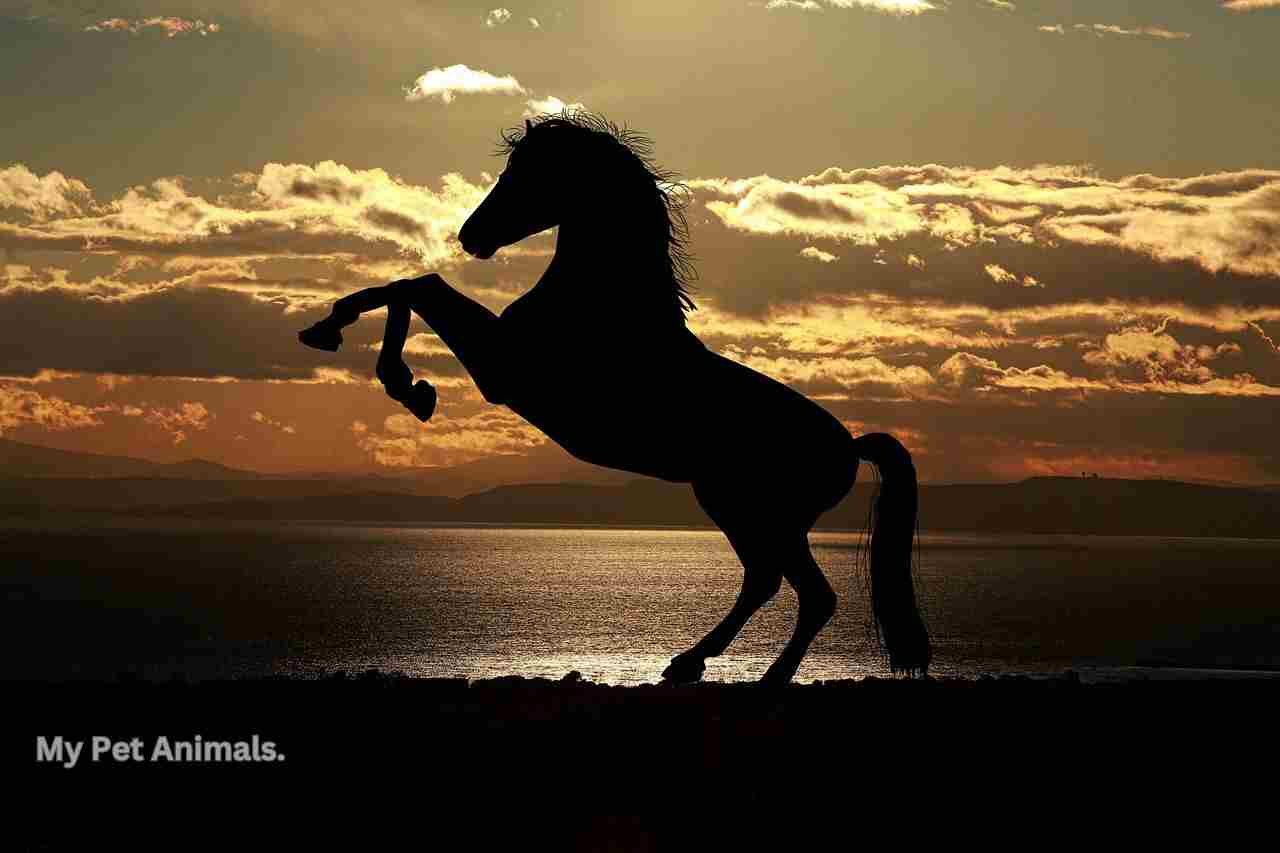Animals, like humans, need homes to survive and thrive. These homes are not just places to sleep; they are also important for protection, finding food, and raising young. The type of home an animal lives in depends on its needs and the environment around it. For example, some animals need the warmth of a cave, while others require the shelter of a tree. Some animals live in water, while others dig burrows in the ground. Each home serves a unique purpose, designed to keep the animal safe from predators, provide the resources it needs, and help it adapt to its surroundings.
In this article, we will explore the many different types of animal home names, from dens in forests to reefs in oceans. By understanding these homes, we can better appreciate how animals interact with their environment and the importance of protecting these habitats for their survival.
Importance of Animal Homes
Why Homes Are Important for Animals
Homes are very important for animals because they provide a safe and comfortable living place. Just like humans, animals need shelter to survive. Homes protect them from harm and help them live their daily lives.
Protection from Weather and Predators
Animal homes protect them from bad weather like rain, heat, and cold. For example, birds build nests to keep their eggs safe and warm, while bears use caves to stay dry and cozy during winter. Homes also keep animals safe from predators. A rabbit hides in its burrow to escape from foxes, and fish use coral reefs to avoid bigger sea animals.
Resting, Raising Young, and Finding Food
Animals use their homes to rest when they are tired. They also raise their babies in their homes, keeping them safe and cared for. For example, squirrels store nuts in tree holes, ensuring they have food nearby when they need it. Beehives help bees store honey and take care of their young.
Homes are essential for animals because they provide safety, protection, and a place to live comfortably. These shelters help them survive, grow, and stay safe from dangers.
Different Types of Animal Homes
Animals live in different types of homes. These homes are called habitats. An animal’s home helps it stay safe, find food, and live comfortably. Some animals live in forests, some in oceans, and others in our homes.
1. Nests
- What is a Nest?
A nest is a home that animals make using things like twigs, grass, or leaves. It keeps them and their babies safe. - Example:
Birds make nests in trees to lay their eggs and care for their young.
2. Burrows
- What is a Burrow?
A burrow is a hole or tunnel that animals dig in the ground. It gives them a safe place to rest and hide. - Example:
Rabbits dig burrows in the ground to stay protected from predators.
3. Caves
- What is a Cave?
A cave is a natural hollow space in rocks or mountains. Many animals use caves as shelters to stay safe and warm. - Example:
Bats rest in caves during the daytime.
4. Hives
- What is a Hive?
A hive is a structure that bees make to store food and raise their young. These can be found in trees or made by humans. - Example:
Bees live in hives, where they make honey and take care of their queen.
5. Webs
- What is a Web?
A web is a net-like structure made by spiders from silk threads. Spiders use webs to catch food. - Example:
Spiders build webs on trees or walls to trap insects for food.
6. Shells
- What is a Shell?
A shell is a hard outer covering that some animals carry as their home. It protects their soft bodies from harm. - Example:
Snails and turtles have shells that keep them safe from predators.
7. Dens
- What is a Den?
A den is a hidden place, such as under trees or in caves, where animals rest and raise their babies. - Example:
Lions live in dens where they can rest and look after their cubs.
8. Anthills
- What is an Anthill?
An anthill is a small mound of soil made by ants. It leads to their underground home, where they live and store food. - Example:
Ants live and work together in anthills as a colony.
9. Coral Reefs
- What is a Coral Reef?
A coral reef is an underwater home made of coral. It provides shelter for many sea animals, like fish and crabs. - Example:
Clownfish use coral reefs as their home to hide from predators and find food.
10. Tree Holes
- What is a Tree Hole?
A tree hole is a hollow space inside a tree that animals use as a shelter. It keeps them safe and warm. - Example:
Owls live in tree holes to rest during the day and stay protected.
These homes show how animals create or find shelters to keep themselves safe and survive in their environment.
Animal Home Name Chart
A chart of animal home names in English.
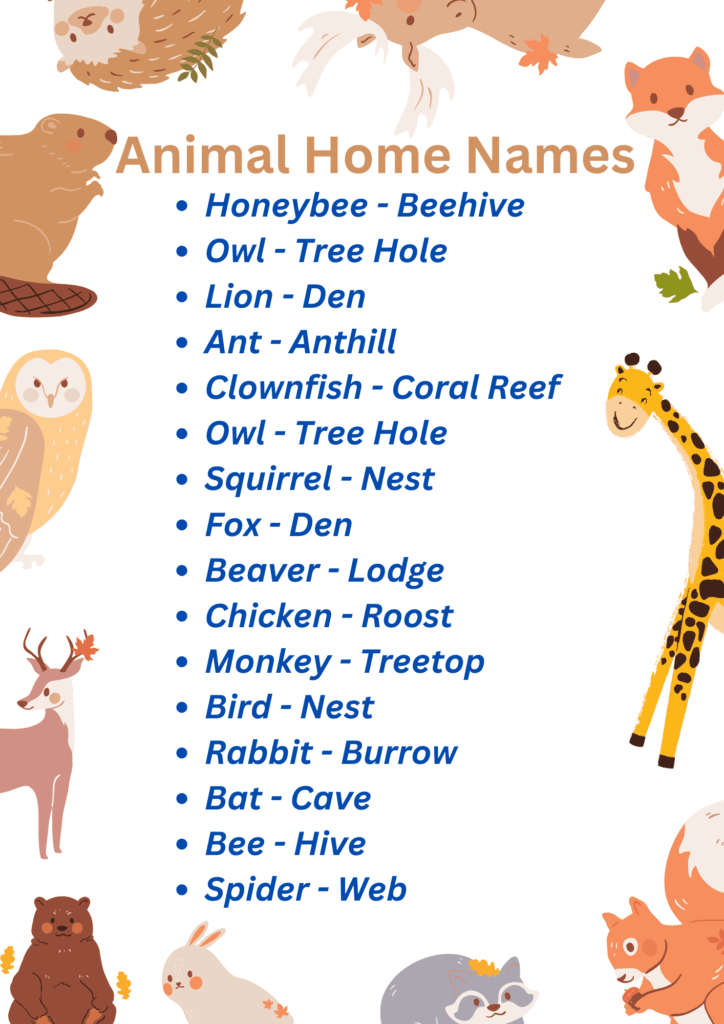
Common Animal Names And Their Home Names In English
Here is a list of animal names and their home names in English.
- Bird – Nest
- Rabbit – Burrow
- Bat – Cave
- Bee – Hive
- Spider – Web
- Snail – Shell
- Lion – Den
- Ant – Anthill
- Clownfish – Coral Reef
- Owl – Tree Hole
- Squirrel – Nest
- Fox – Den
- Beaver – Lodge
- Chicken – Roost
- Monkey – Treetop
List Of 100 Animal Names And Their Home Names
Here is a list of 100 animals along with their respective home names:
- Lion – Den
- Rabbit – Burrow
- Bee – Hive
- Bird – Nest
- Spider – Web
- Fish – Aquarium
- Ant – Anthill
- Fox – Den
- Elephant – Herd (no specific home name)
- Bear – Den
- Snake – Burrow
- Giraffe – No specific home
- Monkey – Nest
- Kangaroo – No specific home
- Horse – Stable
- Cow – Barn
- Penguin – Nest
- Turtle – Shell
- Wolf – Den
- Tiger – Den
- Jaguar – Den
- Leopard – Den
- Parrot – Nest
- Alligator – Den
- Crocodile – Nest
- Owl – Nest or Tree Hollow
- Bat – Cave
- Zebra – No specific home
- Raccoon – Den
- Squirrel – Nest
- Sloth – Tree
- Chimpanzee – Nest
- Panda – Den
- Koala – Tree
- Platypus – Burrow
- Armadillo – Burrow
- Beaver – Lodge (Dam)
- Otter – Den
- Hedgehog – Burrow
- Wombat – Burrow
- Cheetah – Den
- Elephant Seal – Beach Hole
- Walrus – Ice or Shore
- Moose – No specific home
- Lynx – Den
- Hawk – Nest
- Eagle – Nest
- Ostrich – Nest
- Vulture – Nest
- Dolphin – Ocean
- Shark – Ocean
- Whale – Ocean
- Seahorse – Coral or Seaweed
- Crab – Burrow
- Starfish – Ocean Floor
- Octopus – Den or Hole in Rocks
- Clownfish – Anemone
- Cuttlefish – Burrow
- Squid – Ocean
- Lobster – Burrow
- Coyote – Den
- Moose – Forest or No specific home
- Goat – Barn or Mountain Cave
- Sheep – Barn
- Camel – No specific home
- Giraffe – No specific home
- Buffalo – No specific home
- Bison – No specific home
- Horse – Stable
- Donkey – Stable
- Mule – Stable
- Alpaca – Shed or Barn
- Llama – Shed or Barn
- Reindeer – Forest or Open Terrain
- Penguin – Nest
- Peacock – Tree or Ground Nest
- Duck – Nest (Usually near water)
- Goose – Nest
- Swan – Nest
- Turkey – Nest
- Pigeon – Nest
- Seagull – Nest
- Frog – Pond or Wetland
- Toad – Hole or Under Rocks
- Newt – Wetland or Pond
- Salamander – Hollow Logs or Burrows
- Gibbon – Tree Nest
- Kookaburra – Tree Hollow
- Tarantula – Burrow
- Praying Mantis – Vegetation
- Beetle – Under Rocks or Bark
- Dragonfly – Vegetation near Water
- Moth – Under Leaves or Bark
- Cicada – Underground Tunnel
- Grasshopper – Tall Grass or Vegetation
- Termite – Termite Mound
- Weaverbird – Nest (woven in trees)
- Kingfisher – Nest (in burrow near water)
- Vole – Tunnel or Burrow
- Mole – Tunnel
List Of 100 Home Names Of Animals
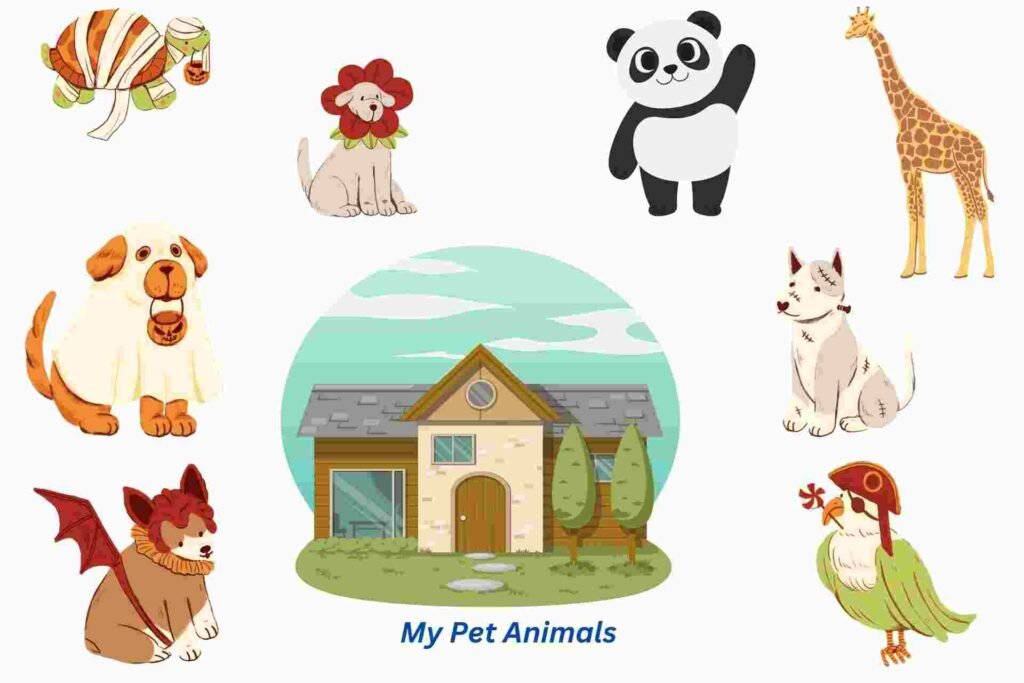
Here is a list of 100 animal home names
- Zoo – A place where animals are kept for people to see.
- Aquarium – A home for fish and other water animals.
- Farm – A place where animals like cows, pigs, and chickens live.
- Wildlife Sanctuary – A place where wild animals are protected.
- Animal Shelter – A home for stray animals or pets waiting for adoption.
- Birdcage – A small home for pet birds.
- Beehive – A home where bees live and make honey.
- Den – A home for animals like bears and foxes.
- Burrow – A hole in the ground where some animals like rabbits live.
- Nest – A place where birds live and lay eggs.
- Hive – A home for insects like bees or ants.
- Kennel – A small house for dogs.
- Stable – A home for horses.
- Pen – A fenced area where farm animals like pigs or goats live.
- Terrarium – A small glass house for reptiles and plants.
- Cage – A small, enclosed space for small pets.
- Reef – A home in the ocean where fish and other marine animals live.
- Bower – A home for some birds, especially the bowerbird.
- Hutch – A small home for rabbits or guinea pigs.
- Pond – A small water home for animals like frogs and turtles.
- Coop: A home for chickens or other poultry.
- Lair – A home for wild animals, such as wolves or tigers.
- Coral Reef – A beautiful underwater home for many ocean animals.
- Swamp – A wetland habitat for animals like alligators and frogs.
- Cavern – A cave where bats and some other animals live.
- Treehouse – A home built on the branches of a tree.
- Nestbox – A small house for birds, often put up by humans.
- Loft – A small room or space in a house for birds like pigeons.
- Rookery – A large group of nests, especially for seabirds.
- Shed – A small building where animals like rabbits might live.
- Grotto – A small cave-like space where some animals live.
- Aquatic Tank – A water container for fish and other water creatures.
- Glen – A valley habitat where some animals like deer live.
- Aviary – A large enclosure where birds fly freely.
- Roost – A place where birds sleep or rest.
- Fissure – A crack in the earth where small animals live.
- Mound – A pile of dirt, sometimes used by animals like ants.
- Crevice – A narrow space where small animals hide.
- Rock Shelter – A home in a rocky area where some animals take shelter.
- Thicket – A dense group of bushes where animals hide.
- Burrow System – A network of tunnels where animals like moles live.
- Snug – A cozy little home for small pets like hamsters.
- Vault – A secured underground home, like for moles or some rodents.
- Bluff – A high cliff area where animals like goats may live.
- Grove – A small wood or forest area where animals like squirrels live.
- Paddock – A small, fenced area for horses.
- Shelter – A place where animals take cover during bad weather.
- Cattery – A home for cats, often used in shelters.
- Corral – A fenced area where animals like horses and cattle stay.
- Purlieu – A rural area where animals like deer might be found.
- Trove – A small hidden home for insects or small animals.
- Cage Trap – A cage used to temporarily hold captured animals.
- Hollow Tree – A tree with a space inside, where some animals live.
- Tant – A small hut where some animals find shelter.
- Spire – A high structure where birds sometimes build their nests.
- Pouch – A special pocket-like home for some animals like kangaroos.
- Ice Cave – A frozen home for animals living in icy places.
- Rainforest Canopy – The top layer of trees in a rainforest, where animals live.
- Sand Dune – A home for desert animals like snakes and lizards.
- Dune Burrow – A hole in the sand where animals like rodents live.
- Pine Forest – A type of forest where animals like deer and owls live.
- Mangrove – A wetland habitat for animals like crabs and shrimp.
- Bamboo Grove – A habitat made of bamboo where animals like pandas live.
- Salt Marsh – A wetland where animals like birds and insects thrive.
- Sandy Pit – A home for some insects or animals living in deserts.
- Meadow – A grassy area where animals like rabbits live.
- Valley – A low area between hills where animals like wolves live.
- Warren – A burrow system where rabbits live.
- Cliffside – A steep area where animals like mountain goats live.
- Wetland – A water-rich area where frogs and insects live.
- Prairie – A flat grassland where animals like bison and deer live.
- Mountain Cave – A high-altitude cave where animals like bears live.
- Estuary – A mix of fresh and saltwater where many sea creatures live.
- Mangrove Swamp – A habitat for birds and marine animals.
- Frozen Tundra – A cold habitat where animals like polar bears live.
- Rainy Forest Floor – The ground in a rainforest where many creatures live.
- Swampy Marsh – A wet area where animals like frogs and alligators stay.
- Savanna – A tropical grassland where lions and zebras live.
- Tropical Island – A place surrounded by water, home to many animals.
- Desert Burrow – A hole in the ground where animals like desert tortoises live.
- Shrubland – A dry area with bushes where animals like foxes live.
- Rocky Ridge – A rocky hill where mountain animals take shelter.
- Cypress Swamp – A swamp with cypress trees where animals like alligators live.
- Tropical Rainforest – A lush, wet area where monkeys and birds live.
- Alpine Meadow – A high-altitude meadow where animals like marmots live.
- Canyon – A deep valley where animals like mountain lions live.
- Floodplain – An area that is sometimes flooded where animals live.
- Beach Nest – A nest on the sand where sea turtles lay eggs.
- Rockpool – A small pool of water by the shore where marine animals live.
- Underwater Cave – A cave submerged in water where fish and eels live.
- Forest Floor – The ground in a forest where many small animals live.
- Mudflat – A coastal area where mud is exposed during low tide, home to many creatures.
- Coral Bed – A home for many small marine creatures.
- Cave System – A large underground home for bats and other animals.
- Windmill Barn – A barn near a windmill where farm animals live.
- Ant Hill – A mound made by ants, where they live and work together.
- Floating Island – A piece of land that floats on water, home to some animals.
- Clifftop Nest – A nest built on a high cliff for birds and other creatures.
- Cedar Grove – A grove of cedar trees where animals like deer live.
- Wet Cave – A cave with water inside, where animals like frogs live.
Pet Animal Home Names
Here is a list of the 20 Pet animal names and their home names in English:
| Pet Animal Name | Home Name | Pet Animal Home Discription |
|---|---|---|
| Dog | Kennel | Kennels are designed to keep dogs safe and secure. |
| Cat | Cat Tree | Cat trees provide climbing spaces, mimicking natural homes. |
| Hamster | Cage | A hamster’s cage helps keep it safe and provides space to run. |
| Rabbit | Hutch | Rabbit hutches provide shelter and space for movement. |
| Fish | Aquarium | Aquariums offer fish a safe, controlled water environment. |
| Guinea Pig | Cage | Guinea pig cages provide safety and space for running. |
| Parrot | Birdcage | Birdcages allow parrots to fly within a safe, enclosed space. |
| Turtle | Tank | Tanks help turtles maintain the right water temperature. |
| Ferret | Cage | Ferret cages provide an enclosed space for sleep and play. |
| Chinchilla | Cage | Chinchilla cages allow for jumping and climbing. |
| Gerbil | Tank | Tanks give gerbils enough space for running and burrowing. |
| Snake | Tank | Tanks with hiding spots offer snakes safety and comfort. |
| Lizard | Terrarium | Terrariums create a controlled environment for reptiles. |
| Hamster | Cage | Hamsters need small, enclosed homes to stay safe. |
| Betta Fish | Aquarium | Aquariums are perfect for keeping betta fish isolated and safe. |
| Canary | Birdcage | Birdcages allow canaries to fly freely but safely. |
| Mouse | Cage | Mouse cages have tunnels to mimic natural burrows. |
| Frog | Tank | Tanks with water areas help frogs stay in their natural habitat. |
| Cockatoo | Birdcage | Birdcages with plenty of space help cockatoos feel comfortable. |
| Koi Fish | Pond | Koi ponds are perfect for these fish to swim freely. |
How Animals Build or Find Their Homes
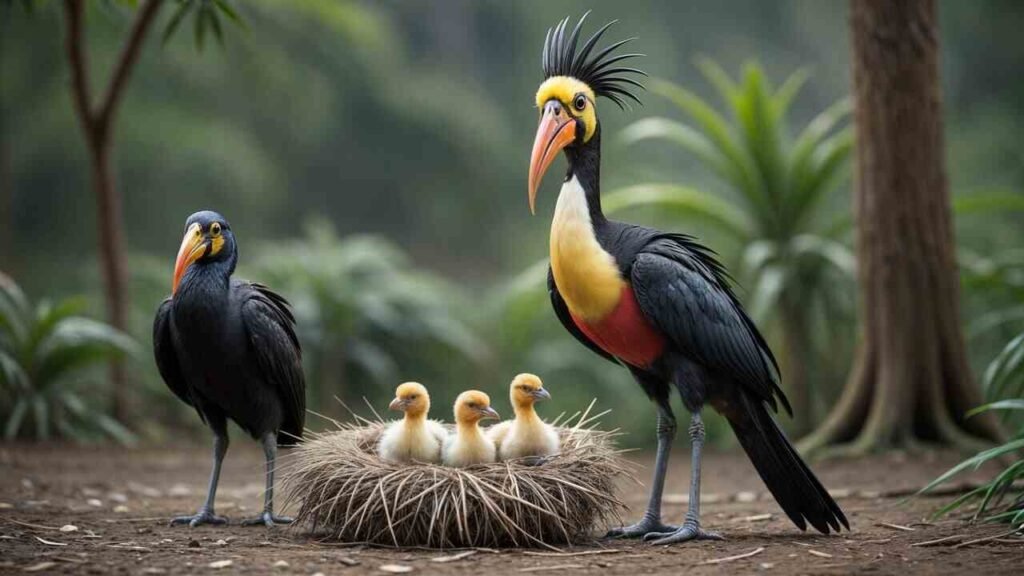
How Some Animals Build Their Homes
Many animals create their homes by using materials they find in nature. These animals build their homes to stay safe, warm, and comfortable. For example, beavers are known for building dams. They use wood, branches, and mud to create strong, watertight structures across rivers. These dams help the beavers stay safe from predators and create a pond where they can build their lodges.
Another example is birds that build nests using twigs, grass, and leaves. They carefully arrange these materials to make a cozy and secure place for laying their eggs and raising their young. Some animals, like ants, also build intricate underground tunnels and chambers to protect themselves and their colonies.
How Other Animals Find Ready-Made Shelters
Some animals do not build homes but instead find ready-made shelters in nature. For example, many birds find existing trees to make their nests in. These trees provide safety from predators and a good place for birds to rest. Similarly, animals like rabbits often find burrows that have already been made in the ground. These burrows can belong to other animals, or the rabbit might find a safe place to dig its own.
Other animals, like turtles and frogs, look for natural shelters like hollow logs, rocks, or ponds where they can find protection and water. These animals do not need to build homes but rely on the environment to provide them with a safe place to live.
Animal Homes Around the World
Animal homes are very different depending on where the animals live. The environment plays a big role in how animals build or find their homes. Animals in deserts, jungles, oceans, and forests all have unique homes that help them survive in their specific surroundings.
Animals in Deserts
In the desert, animals must protect themselves from the extreme heat and dry conditions. Many animals, like lizards and snakes, live in burrows they dig in the sand. These burrows keep them cool during the hot day and warm at night. Some animals, like camels, do not build homes but use their bodies to survive. Camels store water in their bodies, which helps them survive in the dry desert without needing a constant water source.
Animals Homes in Jungles
In the jungle, animals live in a warm and wet environment with many trees. Animals like monkeys and birds build nests in the tall trees. These nests help them stay safe from predators on the ground and protect them from the rain. Many animals in the jungle, like tigers and jaguars, do not build homes but use dense bushes or caves for shelter when they need rest or safety.
Animals Homes in Oceans
Under the water, animals like fish, whales, and dolphins have homes that are very different from those on land. Coral reefs are one of the most important homes in the ocean. Fish like clownfish live in the protective coral reefs where they can hide from predators. Dolphins do not build homes but live in the open ocean, moving in groups for safety. Some animals, like octopuses, find holes in the ocean floor or hide in rocks to stay safe.
Animals Homes in Forests
In forests, animals have many choices for shelter. Some animals, like squirrels, build nests in the branches of trees to stay safe and warm. Other animals, like bears, make dens in caves or under trees to rest and raise their young. Birds in forests often build their nests in tree branches using twigs, leaves, and other natural materials. Forests offer a variety of homes that protect animals from predators and provide food.
Amazing Facts About Animal Homes
Animal homes are not only important for survival, but they can also be fascinating. Here are some amazing facts about how animals build and use their homes.
Beavers and Their Dams
Beavers are expert builders. They can create entire dams by using trees, branches, mud, and stones. These dams block the flow of water, creating ponds where the beavers can build their lodges. Beavers work together to build these large structures, and their dams provide safety from predators. They also help create new habitats for other animals.
Ants and Their Underground Tunnels
Ants are famous for their complex underground homes called anthills. These anthills can be very large, with deep tunnels and many rooms. Some anthills can go as deep as 10 feet underground! Inside, ants have special areas for storing food, raising their young, and resting. These tunnels help ants stay safe from predators and control the temperature of their home.
Birds and Their Nests
Birds are known for making nests, but not all bird nests are the same. Some birds build their nests high in the trees, while others prefer to make their homes on the ground or in cliffs. Some birds, like the weaver bird, make intricate woven nests that are so tightly built they can hang from tree branches without falling. These nests are designed to protect the eggs from predators and weather.
Amazing Facts About Animal Homes
Some animals change their homes depending on the time of year. For example, bears make dens in the winter to hibernate. These dens are often caves or hollow trees where the bear stays warm and safe during the cold months. In the summer, they leave their dens and roam the forest. Similarly, some birds migrate to different places in winter and return to the same nests when the weather gets warmer
Bees and Their Hives
Bees live in hives that they create by building hexagonal wax cells. These hives store honey and pollen and house the queen bee and her offspring. Bees work together to build and protect their hives, and they even change the structure depending on the season. In winter, bees cluster together inside the hive to keep warm, while in summer, they work outside to collect nectar and pollen.
Frequently Asked Questions
Why do animals have different names for their homes?
The names of animal homes depend on the animal and the materials it uses or where it lives. For example, a bird’s home is called a nest because birds build nests to lay eggs and raise their young, while a beaver’s home is called a dam because they build dams to create ponds.
Can animals use homes made by other animals?
Yes, some animals use homes made by other animals. For example, rabbits may use burrows made by other animals, and some birds might take over old nests. Other animals, like squirrels, may use tree holes made by woodpeckers.
Do all animals build their own homes?
No, not all animals build their own homes. For example, beavers and birds are known for building homes, but animals like snakes and frogs find natural shelters. A snake might live in a hollow log or under a rock, while frogs may use ponds or moist areas as their homes.
What is the home of a crocodile called?
The home of a crocodile is called a den or nest. Crocodiles often live in rivers, lakes, or swamps, and they make their dens near the water.
What is the home of a dog called?
The home of a dog is called a doghouse or kennel. It is a small shelter where a dog can rest and sleep, usually found outside the house.
What is the home of a cat called?
The home of a cat is called a cathouse or simply a home. Cats usually live inside houses with their owners, but some may have outdoor shelters like a cat hut or a cat bed.
What is the home of a parrot called?
The home of a parrot is typically called a nest. Parrots build their nests in tree branches, often in hollow trees or the spaces between tree branches. Some species of parrots may also use holes in trees or even cliffs to create their nests. These nests provide a safe place for parrots to lay their eggs and raise their young.
Conclusion
Animal homes are essential for the survival of animals. These homes provide shelter, safety, and protection from the weather and predators. They also offer a place for animals to rest, raise their young, and find food. Without proper homes, animals would struggle to survive and thrive in the wild.
Understanding how animals build or find their homes helps us appreciate their unique ways of living. Each animal has adapted its home to fit its environment, whether it is a burrow under the ground, a nest in a tree, or a den in a cave.
By learning more about the homes of animals, we can better understand their needs and how to protect them. Many animals face threats from climate change, habitat loss, and human activities. When we understand how important these homes are, we can take steps to protect the places where animals live, ensuring their survival for future generations.


